AI Summary
Would you like to add DNS records for your WP Mail SMTP mailer in GoDaddy? Setting up your DNS correctly is an important step in ensuring seamless email communication from your website.
In this tutorial, we’ll show you how to add DNS records for WP Mail SMTP on sites hosted with GoDaddy.
In This Article
Before getting started, make sure WP Mail SMTP is installed and activated on your WordPress site.
Understanding How DNS Records Work in SMTP
The Domain Name System (DNS) is like the internet’s address book. DNS provides a means to map a domain name (e.g., example.com) to its corresponding IP address (e.g., 123.123.80.20). Just like how you store a person’s phone number with their name on your smartphone to easily remember them.
DNS records act as a storage system for the settings needed to map a domain name to its corresponding IP address. This means each domain has its unique set of DNS records.
Most mailers in WP Mail SMTP use DNS records as a means to verify your domain on their platform. In some cases, it can be used to improve email deliverability, as in the case of adding SPF, DKIM, and DMARC records.
In the next sections, we’ll cover the steps for adding DNS records for sites hosted on GoDaddy.
Accessing the DNS Settings in GoDaddy
To locate your site’s DNS settings, you’ll first need to log in to your GoDaddy account.
Once you’ve logged in, click on Domain in the left side menu.
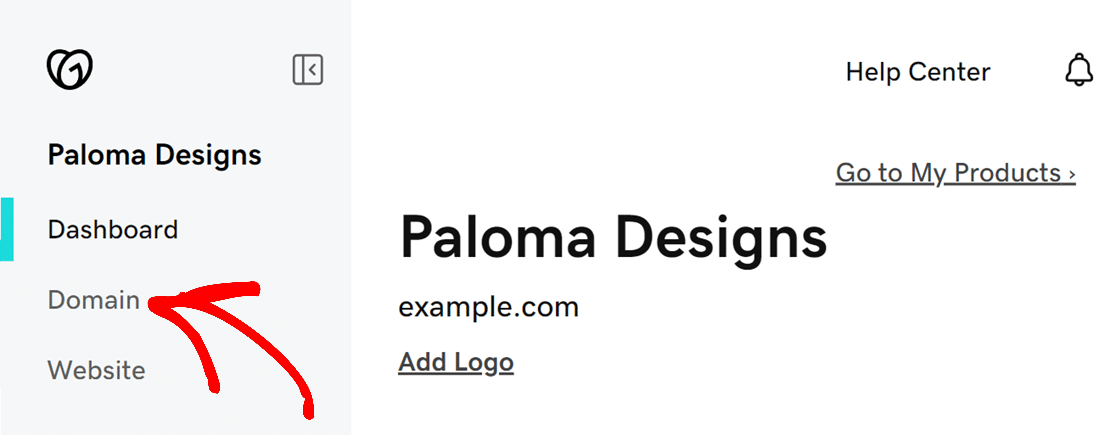
Next, for the domain where you want to add the DNS records, click on the Manage DNS button.

On the next page, you’ll see a list of your current DNS records.
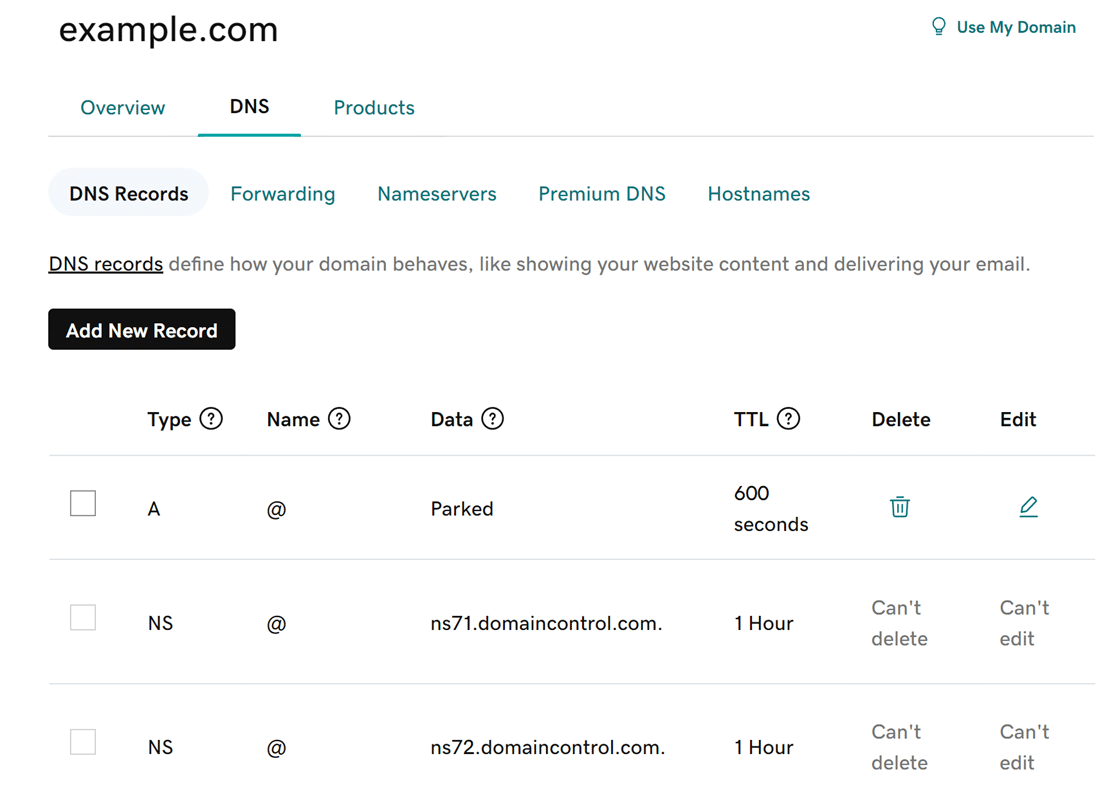
Adding Your DNS Records
To add a new DNS record, click on the Add New Record button. As an example, we’ll add one of the CNAME records SendLayer provides.
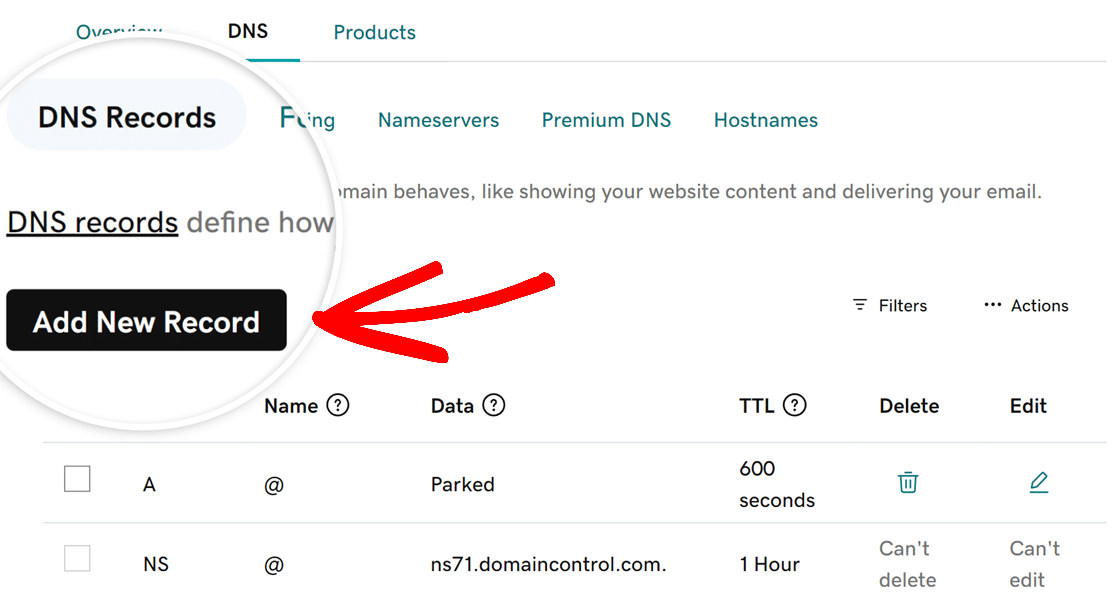
Then, a new section will appear where you can add details for a single DNS record. Here you’ll see inputs for the DNS record Type, Name, Value, and TTL (Time To Live).
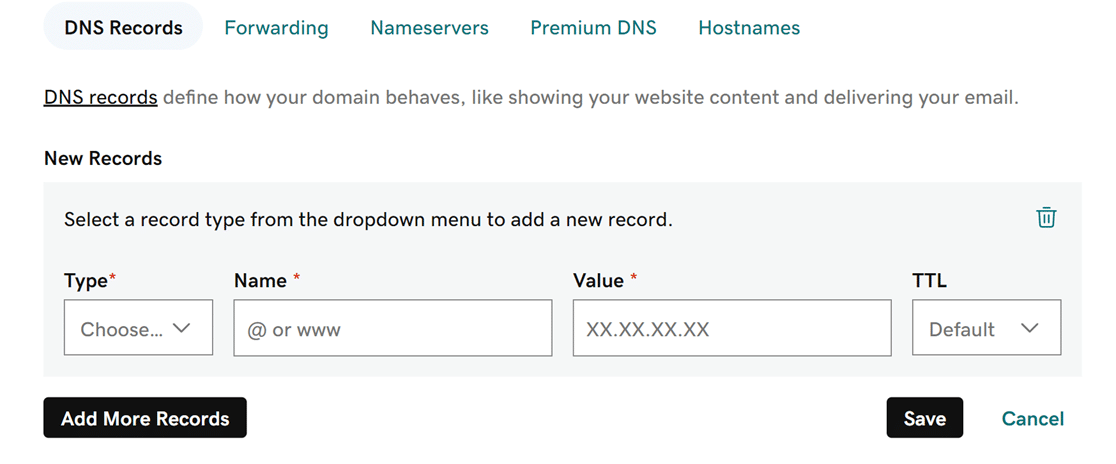
We’ll cover each of these fields below.
Type
First, you’ll need to specify the type of the DNS record you’re adding by selecting an option from the Type dropdown. Your mailer will specify which type of record you need to add, such as CNAME, MX, TXT, etc.
For our SendLayer example, we’ll select CNAME from the list of options in the Type dropdown.

Name
This is where you enter the subdomain or identifier given by your mailer. Depending on your mailer, this could also be referred to as ‘Host’ or ‘Hostname’.
For our example, we’ll use the sl subdomain provided by SendLayer.

Note: GoDaddy will append your domain name to the subdomain you add in the Name field.
Value
Here, you’ll enter the target or destination details. This is usually an address that your mailer service will provide. It indicates where requests should be directed or how they should be handled.
For our example, referencing SendLayer, we’ll input sl.m2.sendlayer.net.

TTL
This is the caching duration for the DNS record, indicating how long servers remember its details. If your mailer hasn’t specified a value for TTL, it’s best to leave it at the default GoDaddy setting.
For our SendLayer example, we’ll select Custom from the TTL dropdown and then enter 600 in the Seconds field.
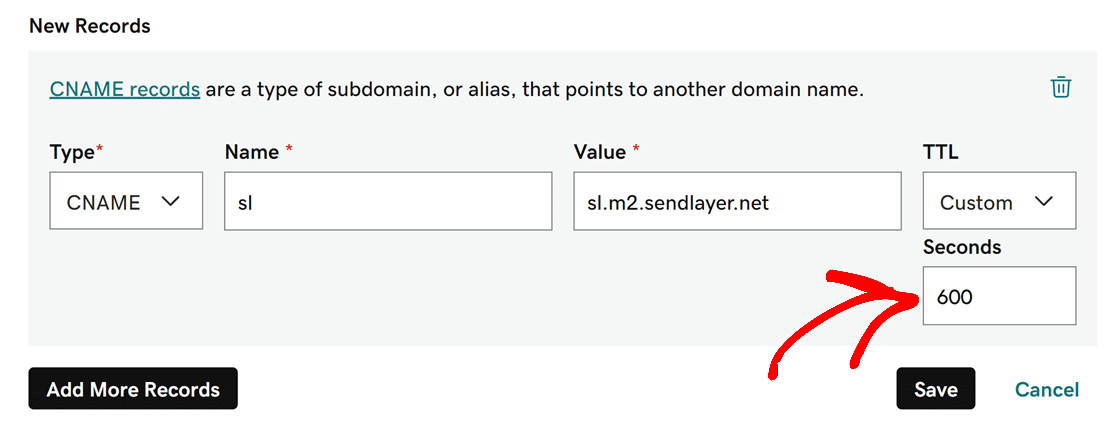
Once you’ve finished entering the values for the DNS record, go ahead and click the Save button.
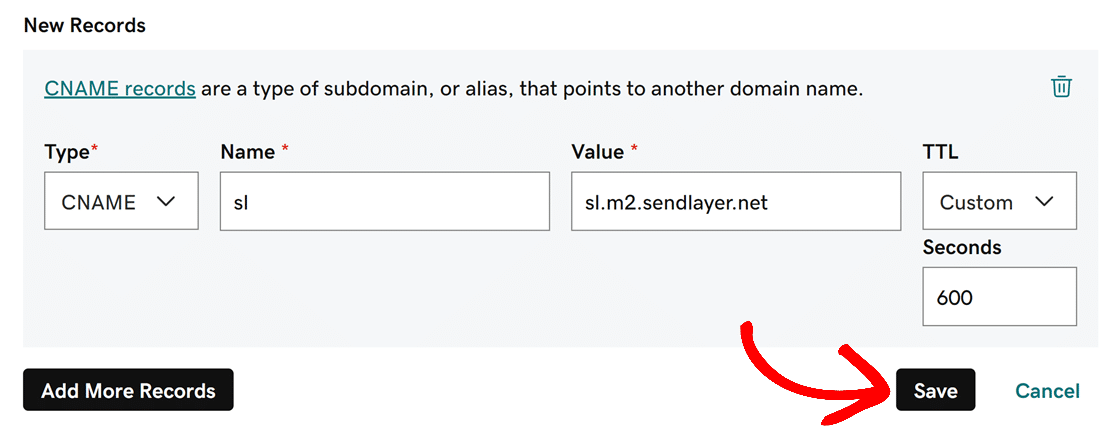
You’ll need to repeat this process until you’ve added all the DNS records provided by your mailer.
Verifying Your DNS Records
After adding DNS records to support WP Mail SMTP, we recommend verifying that they’ve been implemented correctly. This step helps ensure optimal email deliverability by confirming that your outgoing emails are authenticated.
There are a couple of ways to verify your DNS records:
- Sending a test email: Utilize WP Mail SMTP’s built-in tool for sending a test email. If there’s an issue with your DNS records, an error notification will pop up.
- Using the Site Health tool: The WordPress Site Health tool can help identify any DNS verification problems. If there’s a verification issue with your DNS records, you’ll see a message that provides actions you can take to help resolve it.
For a thorough walkthrough on how to use these tools, be sure to check out our complete guide to verifying your DNS records.
Note: Remember, changes to DNS settings might take up to 48 hours to fully propagate. If you’ve made recent updates, giving it a little more time before troubleshooting might be worthwhile.
That’s it! Now you know how to add DNS records on domains hosted with GoDaddy.
Next, would you like to test your WP Mail SMTP setup before going live? Our guide on sending test emails will walk you through the process step by step.
